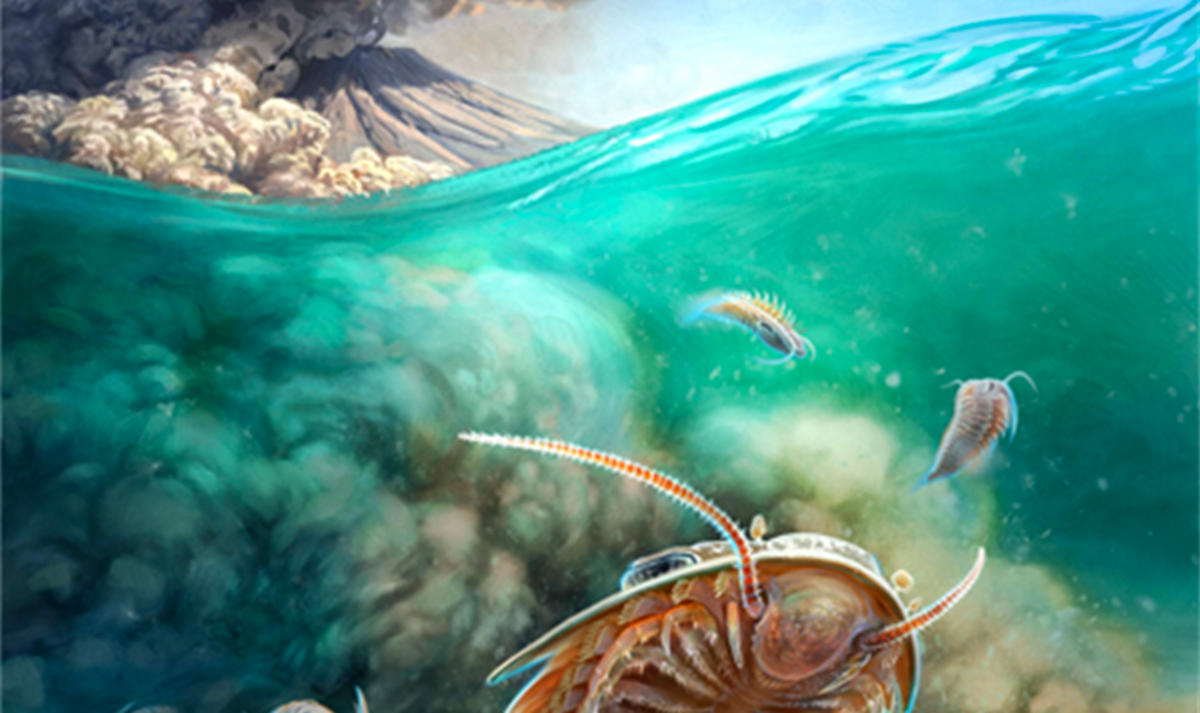515-million-year-old marine ‘Pompeii’ discovered in Morocco
Categories : Recherche Résultats
paru le 06-28-2024 (12:21) - Updated on 10-29-2024 (15:57)

Volcanoes located at the boundary of tectonic plates are known for their explosive and powerful eruptions, which can generate several tens of square kilometresof material. These eruptions can trap present-day life almost instantaneously, preserving under their ashes the evidence of entire civilisations, such as those of Santorini and Vesuvius. An international team of researchers, coordinated by Professor Abderrazak El Albani of the University of Poitiers, has been working on deposits dating back 515 million years. The team also includes researchers from a number of institutions: University of Lille, Cadi Ayyad University in Marrakesh, Natural History Museum,London, Universityof Bristol Pomona College, California, and University of New England in Australia. The team has published their findings on two new species of trilobites, discovered in exceptional condition, in the leading American journal Science . These fossil arthropods, found petrified in their final posture, are representatives of a Cambrian ecosystem discovered in volcanic ash levels at Aït Youb, a marine ‘Pompeii’ in the Souss-Massa region of Morocco. This work was featured on the cover of the magazineScience.
Using 3D imaging to reconstruct fossil organisms frozen in volcanic ash
With over 22,000 species discovered spanning the Paleozoic era (539 to 252 Ma), trilobites are without doubt the best-known fossil invertebrates. While their calcite exoskeleton gives them high potential for fossilisation, explaining their abundance in the fossil record, we only know about their non-mineralised appendages and internal organs from a limited number of specimens.
At Aït Youb, 515 million years ago, during an eruption, the living organisms present were buried by fiery clouds. The biological tissues were then consumed by the intense heat, leaving only cavities in the solidified ashes: the moulds of the organisms.
Thanks to a non-destructive imaging technique called high-resolution X-ray micro-tomography (XRµCT), the research team was able to study the marine fossils in 3D, without even removing them from their rocky gangue. By digitally filling in the gaps left by the organisms, they were able to create casts of the missing bodies in striking detail. This study sheds new light on the anatomical organisation of trilobites, particularly the cephalicpart.. In particular, it reveals for the first time in this class of fossil arthropods the presence of a labrum, a soft mouthpiece used as an upper lip in modern euarthropods, putting an end to a century-olddebate.
For Professor El Albani: ‘This discovery demonstrates the essential role of underwater volcanic ash deposits for fossil preservation, and the crucial importance of exploring volcanic underwater environments. It also demonstrates that XRµCT is a powerful tool for observing fossilised objects in very hard rock in 3D, without the risk of altering them. Thanks to this technique, pyroclastic deposits should become new targets for study, given their exceptional potential for trapping and preserving biological remains, even soft ones, without generating degradation that usually results in incomplete specimens or even their destruction. This provides new perspectives on our planet’s past.’